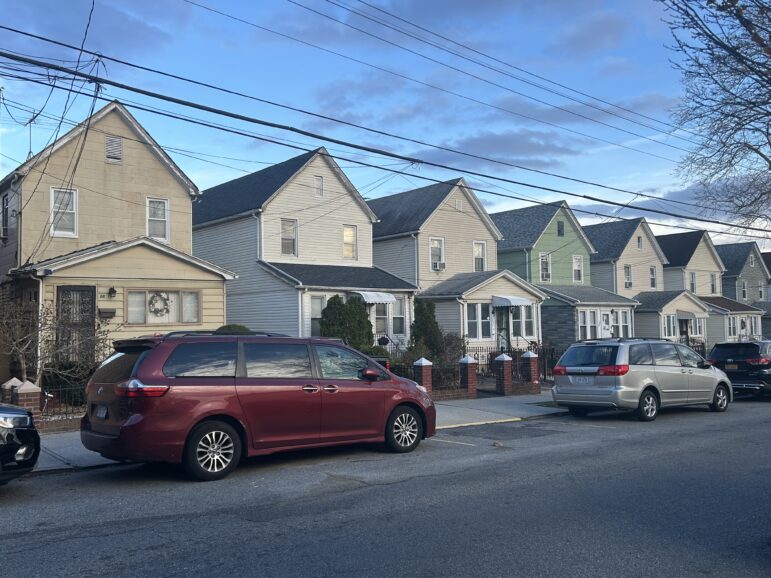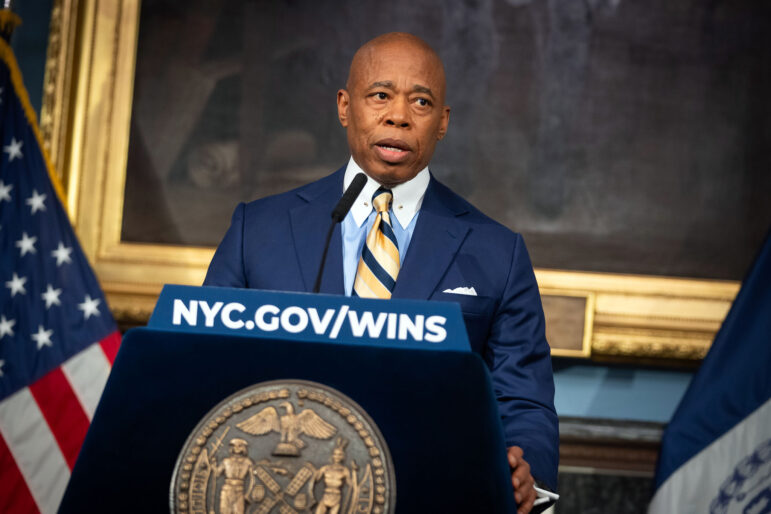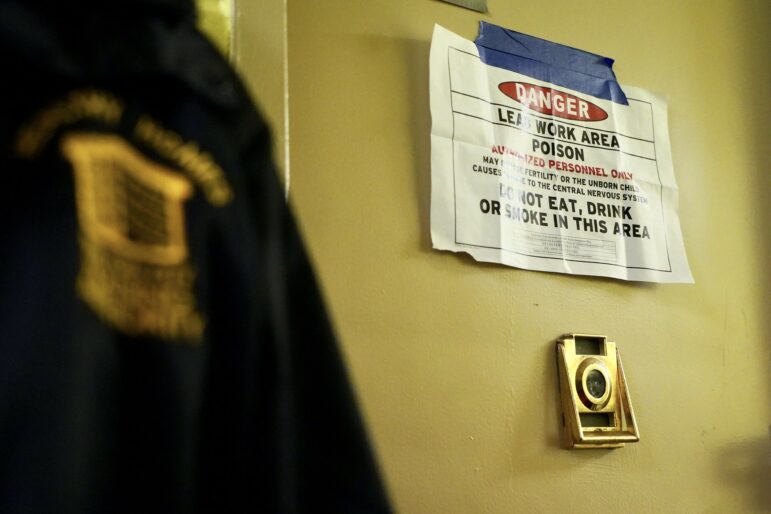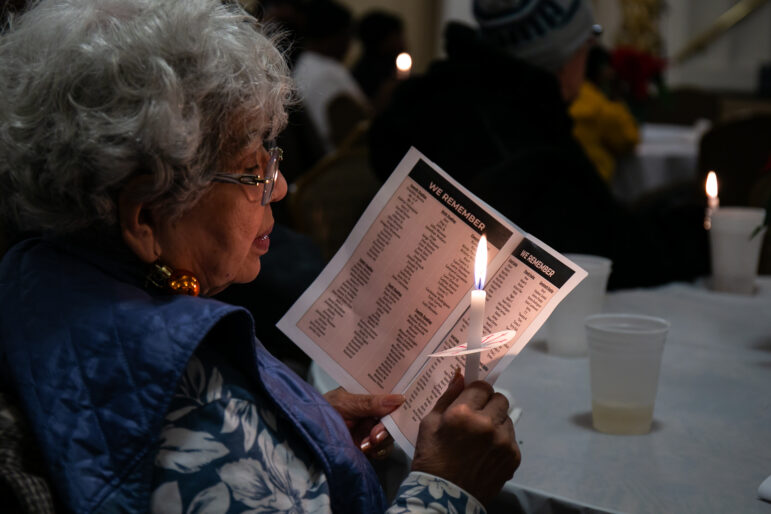
NYCEDC
A drawing from the EDC's literature on the Far Rockaway plan.
A few weeks ago, an unknown number of Far Rockaway property owners received a letter in the mail regarding the New York City Economic Development Corporation’s proposal to rezone the downtown area. The letter was from Goldstein, Rikon, Rikon & Houghton, P.C., a law firm that specializes in eminent domain proceedings, and included a copy of a notice from the city record.
“Please be advised that, pursuant to the enclosed notice, the New York City EDC is considering acquiring the property that is referenced above for Downtown Far Rockaway Redevelopment,” the letter said, referring to the property owner’s lot number.
The letter continued: “The New York City EDC’s acquisition may occur through a process called eminent domain, which allows the condemning authority to acquire property for a public use even if the owner does not wish to convey title. Our firm learned of the potential acquisition of your property in the enclosed public notice. If the City ultimately takes title to the property, then it will be required to pay ‘just compensation’ to the former owners…”
A few weeks later, some of these property owners showed up at the scoping hearing for the Far Rockaway rezoning plan, demanding to know if the city intended to seize their property.
“They’re not telling us if they’re going to take our livelihood away when they start tearing down buildings!” said Gus Markides, a local business owner.
The audience was most upset when a coalition of pastors said they were concerned about the fate of First Baptist Church and another vacant building they own.
“We are definitely for the revitalization but we will not allow the houses of worship to be pushed out,” said Pastor Dennis Cooke of the Rockaway Inwood Ministerial Coalition.
In actuality, the city’s plan would require about a dozen property owners to turn over their property to the city, but officials emphasize that the plan is still only a proposal, with plenty of time for further discussion and public comment. Many of the property owners who received the letter, including Markides, would not be affected. The church itself would not be affected, but its vacant building could be taken.
EDC’s plan for downtown Rockaway includes the creation of an Urban Renewal Area (URA) consisting of about 13 acres or one fourth of the total rezoning area. That designation, which the city can apply to areas deemed blighted, would give the city the authority to redevelop that area through the use of eminent domain, in which the city condemns property for a public purpose and provides the property owners with the fair market value of their property. The owners have the right to sue if they don’t agree the condemnation is necessary for a public purpose, and they also have a right to file a claim for additional compensation.
The landlord Rita Stark—well known for owning but not actively using large swaths of property in the city—and her affiliates own about 75 percent of the URA. Local community groups and elected officials have long struggled to make Stark develop her mostly vacant shopping mall, and Councilman Donovan Richard’s working group of community organizations came up with the idea of establishing the URA. Adopting the working group’s suggestion, EDC has proposed facilitating the development of a new mixed-use development, a public plaza and a new street grid. It would be the first URA established by this mayor as part of a neighborhood rezoning plan.
The threat of eminent domain is aimed chiefly at Stark’s properties. While EDC has tried to limit the number of nearby properties that will be affected, it is proposing using negotiations or eminent domain to take 18 other tax lots adjacent to Stark’s property, owned by about a dozen other owners. EDC sent notices to those owners concerning this proposal when it released its public notice.
The law firm, however, made matters confusing by sending letters to property owners both inside and outside the Urban Renewal Area, and even some outside the rezoning area.
“It has been brought to our attention that an unknown number of local Far Rockaway businesses have been contacted by private law firms suggesting that the city will be using eminent domain to seize their property. These notices are confusing and, in many cases, misleading and inaccurate,” wrote Richards in a subsequent letter sent to property owners. The area where the city has proposed to use eminent domain, he continued, is “roughly bound by Mott Avenue, Redfern Avenue, Central Avenue/Augustina Avenue, Nameoke Avenue.”
Joshua Rikon, a lawyer with the eminent domain law firm, said they regularly comb through the public record to find notices of the city’s intent to take properties by eminent domain and alert potential clients of the firm’s services. The public notice about Far Rockaway offered an approximation of the streets bordering the rezoning area, and mentioned that an URA would be established, but did not specify which properties might be considered for acquisition using eminent domain. The firm sent out the letter to properties within the approximate borders of the rezoning area. Rikon said that if owners outside the rezoning area also received letters, that was a mistake.
“If the notice had been more specific, we would not have sent it to everyone,” Rikon told City Limits. “After attending the scoping meeting, I learned that there are different parts of the project and that the proposed [eminent domain] would only relate to the proposed URA.” Rikon, who told City Limits he did not know how many letters they had sent out, says they’ve sent a follow-up letter to property owners to inform them which properties might be affected.
While that letter might calm fears in much of downtown Rockaway, Doctor Duane M. Sleet Sr., the pastor of First Baptist Church, remains upset about the city’s potential use of eminent domain to take the church’s vacant building.
Sleet said the building was previously used as a food pantry and ministry before its roof collapsed in 2011. In 2012, the church hired a general contractor to demolish the building, but the contractor failed to acquire the necessary permit, and the church ended up with over $7,000 in fines (they have already paid back over $5,000). Sleet wants to keep the property and either turn it into a parking lot or work with a developer to rebuilt it with ministry space on the bottom floors and housing on top floors, but has struggled with limited funding and the site’s current M1 zoning. He accused Richards and the city of failing to communicate sufficiently with the church.
“If you need something from us, you come and talk to us,” he says. “You don’t even give us the courtesy of a conversation?”
Cell-phone texting records provided by the councilman’s office, however, show that Richards has tried several time to reach out to Sleet. Richards says he is open to working with the church to ensure the property is redeveloped.
“His building that was destroyed 20 years ago has really left a negative impact on the community,” said Richards, who said the building was vacant prior to 2011, and that tenants in the surrounding neighborhood have long wished the site could be reactivated with a community center. “I’m definitely open to having conversations with Reverend Sleet, and at this point, one of the things we want to see is a plan from the church on how they’re going to really fix that property.”
City Limits’ coverage of housing and development is supported by the New York Community Trust and the Charles H. Revson Foundation.








